Julia Jamieson
Designer
Primary design concentration:
What I do most people would probably consider “product design”—so some mix of UX, UI, branding, and visual design.
Most preferred tools for designing:
Copic and Sharpie markers, and plain paper. My Moleskine notebook and a Papermate pen. Apple Keynote and Adobe Illustrator for workflows, wireframes, and visual design. InVision for quick prototyping and validating workflows.
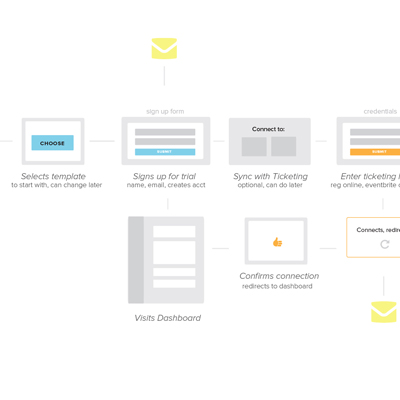
Worfklow diagram
How and why did you choose to become a designer?
When I was little, I thought I’d grow up and work with restaurant owners to create their spaces from the architecture down to the menu. I didn’t know it at the time, but that was kind of my subtle interest in design before I knew what design was. I was lucky enough to have parents that agreed to let me attend art school, and now that I’m working, I can’t imagine doing anything else.

My desk at home
What are some of the challenges you encounter as a designer and how do you deal with them?
Over-committing. I go through constant waves of taking on too much and then getting antsy that I want to take on more again. But in reality, when I take on too much, it’s bad for everybody involved, so I’m working on finding more focus.
What is your definition of an “elegant solution,” that is, good design?
An “elegant solution” is something that provides the user with exactly what the need to complete the task, no more, and no less. Good design should be discoverable on the first experience, have a strong sense of hierarchy, and feel good. Some people might disagree, but I firmly believe part of it is intuition, and the other part is trained taste—going back, finessing the details until your work is just right, and then refining more.
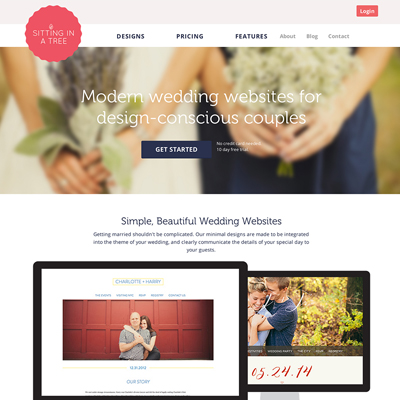
Web design for Sitting in a Tree, which I co-founded
From skills to values, what makes a designer successful?
The ability to listen and articulating ideas is critical. To add to that, being open to other people, and having a passion for your work, brings those skills together. It’s a joy to be a designer, so remembering that is also part of being successful.
How do you stay motivated and grow personally and professionally as a designer?
I love to read about other designers and creatives. Currently, I’m obsessed with Offscreen Magazine, reading about some of my heroes makes me want to work harder. Personal projects also fuel my motivation, it’s great to have full creative control when normally I am consulting on client projects. That combination of personal projects and client works keeps me learning and moving forward.
For those aspiring to become a designer, whatever the discipline, what is your advice?
Realize that no matter how good you think you are, someone is always better than you are, and that’s okay. So stay kind, pay attention when someone is talking to you (put your phone away, people), and remember there’s no one set way. So much of what designers do is trial and error.
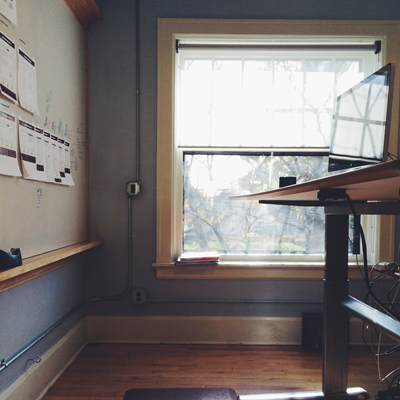
Workspace
What is your quest in design, from a professional practice, education or evolution standpoint?
My quest in design is to bring usability and beauty together. Design is lovely things like branding and packaging, but it’s also engineering and programming. I recently saw Richard Saul Wurman talk, and what he said was “design your life, design is everything,” there’s no better way of putting it.
Previous: Krista Radoeva | Next: Ivy Kim
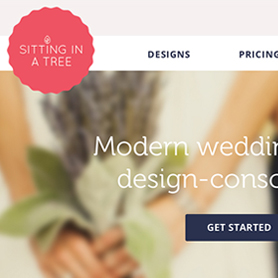
Support this solo initiative
What began as a collection of links has evolved into a comprehensive archive committed to creative culture—offering so far 395 interviews with under-the-radar Artists, Designers & Makers, in addition to 202 write-ups across events, books, movies, more. Free to explore. Free from ads. If you gain a level of motivation, knowledge, even delight, from Design Feast, please support on Patreon. Thanks for your consideration!
Wishing you continual success,
Nate Burgos, Content Creator & Publisher
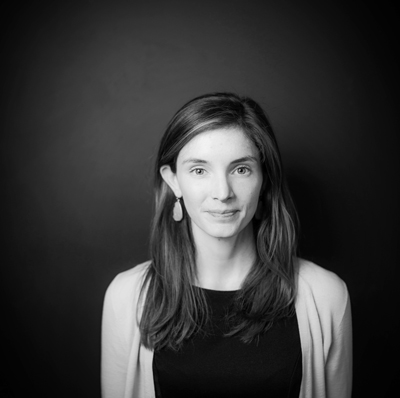
Comments
There are no comments yet.
Leave Your Comment